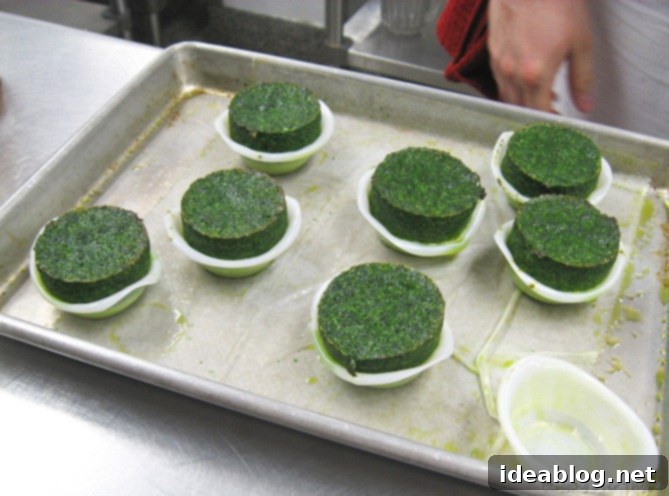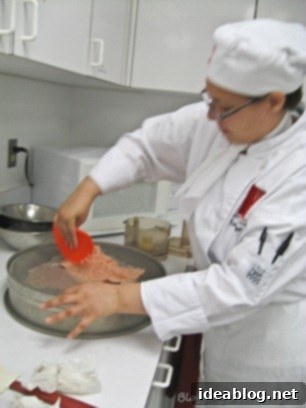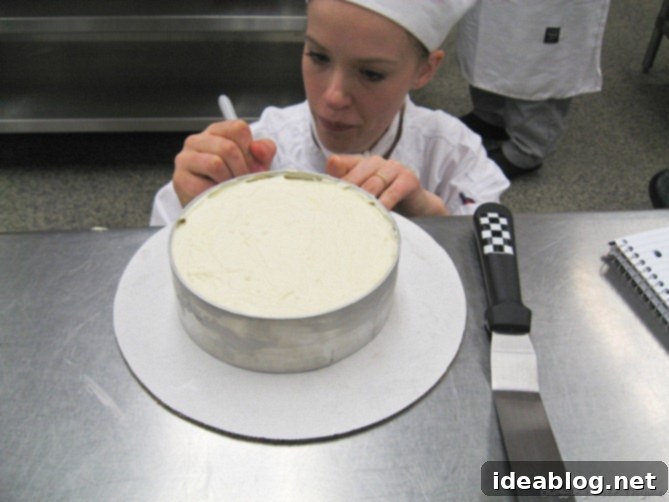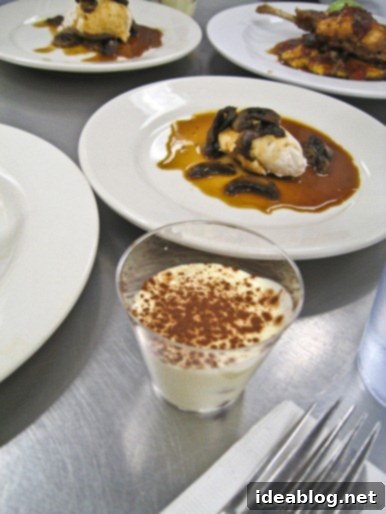Culinary School Chronicles: Mastering Braised Rabbit, Intricate Mousses, and Dessert Delights
Following last week’s memorable field trip to Ayrshire Farm, which many of you thoroughly enjoyed, we’re now diving back into the heart of our culinary curriculum. This week brought a fascinating mix of classic French techniques, challenging preparations, and a few dishes that certainly stretched our palates. It’s always an adventure in the kitchen, and some days are filled with more “learning experiences” than pure deliciousness. Yesterday was one of those days, marked by both exciting culinary breakthroughs and a few intriguing, albeit unconventional, creations.

While I can’t honestly say everything on the menu appealed to me at lunchtime, the day was packed with invaluable lessons and techniques. To keep things engaging, let’s start with the more successful and undoubtedly captivating dishes we tackled.
The Art of Game Meat: Braised Rabbit Legs with Chasseur Sauce
One of the highlights of the day, and a true first for our class, was cooking rabbit. This marked our initial foray into preparing game meat, a significant milestone in our culinary training. Although I’ve had rabbit a handful of times before, this was my inaugural experience cooking it from scratch. We approached this dish using methods very similar to our other braised meat stews, focusing on slow cooking to achieve maximum tenderness. The accompanying Chasseur Sauce, a classic French accompaniment we’ve made once before, truly elevated the dish.
Chasseur sauce is a robust and flavorful creation featuring finely chopped tomatoes, aromatic tarragon, and perfectly sautéed mushrooms. This particular preparation served as a pleasant surprise regarding my perception of tarragon; I’ve decided I may not be as averse to it as I once thought! It seems to depend heavily on the context of the dish – definitely a fan in this sauce, unlike my previous experiences with bearnaise. Learning to balance these distinct flavors is a crucial part of becoming a versatile chef.
The journey began with the fundamental task of breaking down our rabbits. This hands-on experience, transforming a whole animal into culinary-ready portions, is a vital skill. Hopefully, this photo doesn’t deter any squeamish readers; it’s all part of understanding our ingredients from source to plate.

Our farmed rabbit yielded meat that was notably light in color, possessing a texture akin to chicken but with a pleasingly firmer bite. While the braising process imbued it with rich flavors, a touch more time in the oven would have rendered it even more exquisitely tender, a subtle but important detail in achieving perfection. This experience reinforced the importance of precise timing and heat management in braising, ensuring every cut of meat reaches its optimal succulence.
Spinach Flan: A Culinary Concept with a Quirky Twist

To complement the braised rabbit, we prepared a Spinach Flan. This seemingly simple side dish involves a surprisingly delicate process. We started by blanching fresh spinach, then meticulously squeezing out every bit of excess moisture – a crucial step for achieving the right texture. The blanched and dried spinach was then processed in a blender to create a fine, vibrant puree.
Unfortunately, this is where our kitchen challenges for the day began. Our blender decided to be uncooperative, making it difficult to achieve the perfectly smooth puree required. We improvised and worked with what we had, hoping for the best. The pureed spinach was then whisked into a rich custard base made with cream and eggs, poured into individual ramekins, and gently baked in a water bath. The water bath ensures even cooking and a silky-smooth result.
Despite the blender hiccups, the flan actually set! I had high hopes, thinking I would truly enjoy this dish. While the concept of a savory spinach custard is appealing, the texture of our finished flan was undeniably peculiar – quite gelatinous and “jello-y.” It wasn’t quite the velvety dream I’d imagined, but the concept itself remains intriguing, and it was a valuable lesson in adapting to equipment malfunctions in a professional kitchen environment.
Exploring Foundational Techniques: The Enigma of Chicken Mousse
And now, for what was arguably the most unique and perhaps “weirdest” dish of the day: Chicken Mousse. You might be wondering, as many of us did, why we would be dedicating class time to making chicken mousse. The answer lies in its foundational importance. This seemingly obscure preparation serves as a crucial starting point for mastering the technique of creating all types of mousses, a versatile skill in haute cuisine.
We primarily use chicken, not because chicken mousse is a particularly coveted or common dish in fine dining restaurants, but because it’s an economical ingredient that allows us to perfect the delicate technique without significant cost. Once we’ve mastered the intricacies of emulsification and texturization with chicken, we can then confidently apply this knowledge to more luxurious and delicious applications, such as a delicate scallop mousse or an exquisite lobster mousse. Our instructors—Chef Brian, Chef Somchet, and assistant Ashley—are exceptional at illustrating these broader applications. Ashley, for example, shared an incredible idea from a restaurant she worked at: homemade cannelloni pasta generously stuffed with a scallop mousse enriched with fresh lobster meat. Now *that* sounds like a culinary masterpiece worth pursuing!

The actual technique for preparing chicken mousse, despite its unusual nature, is surprisingly straightforward. We began by processing skinless chicken breasts in a food processor until they formed a very thick, almost paste-like consistency. This paste was then meticulously passed through a tamis, which is essentially a very fine mesh screen. This step is critical for removing any fibrous bits or connective tissue, ensuring the mousse achieves an incredibly smooth, velvety texture. Finally, we carefully folded in just the right amount of heavy cream, gradually incorporating it to create the light, aerated structure characteristic of a mousse.
Working with the chicken paste before it was transformed into mousse was, to be frank, a bit gross. Luckily, my classmate Tasha took on that particular task with admirable composure! It’s a testament to the hands-on nature of culinary school that every step, even the less glamorous ones, provides valuable experience.

Once prepared, we skillfully quenelled the mousse – a classic technique involving shaping the mixture into elegant oval “football” shapes using two spoons – and then gently poached it. The finished product, while visually intriguing, lived up to its reputation for unusual texture. It truly tasted like chicken, which is unsurprising, but the soft, almost spongy consistency left much to be desired in my personal opinion. To make it more palatable, we served it with a rich mushroom Madeira sauce, crafted from chicken bones, a classic mirepoix, and all the usual aromatics. This sauce certainly helped, but after one bite, I honestly felt I had experienced enough of the dish for the day. It was an invaluable lesson in technique, even if the end product wasn’t a personal favorite!
Sweet Endings and Future Preparations: Tiramisu and White Chocolate Cheesecake

Despite the culinary adventures of the main courses, we concluded the day on a sweet note with dessert. We assembled a classic Tiramisu, utilizing the dried homemade ladyfingers we prepared just the day before. While the tiramisu was competently executed and tasted good, I must admit I’m not a huge fan of tiramisu myself, so it didn’t quite win me over. Still, it was another excellent demonstration of utilizing previously prepared components to create a final dessert.
The afternoon was incredibly productive, as we also began preparations for upcoming classes. This included initiating the brining process for whole chickens, a technique essential for ensuring juicy and flavorful poultry. Additionally, we started the creation of a luxurious white chocolate cheesecake, destined to be a delectable highlight for tomorrow’s culinary session.

Even on days when not every dish is a personal triumph, the sheer volume of techniques learned and the continuous production for future classes make every moment in the kitchen invaluable. Stay tuned for more details and delicious creations from our ongoing culinary journey!
